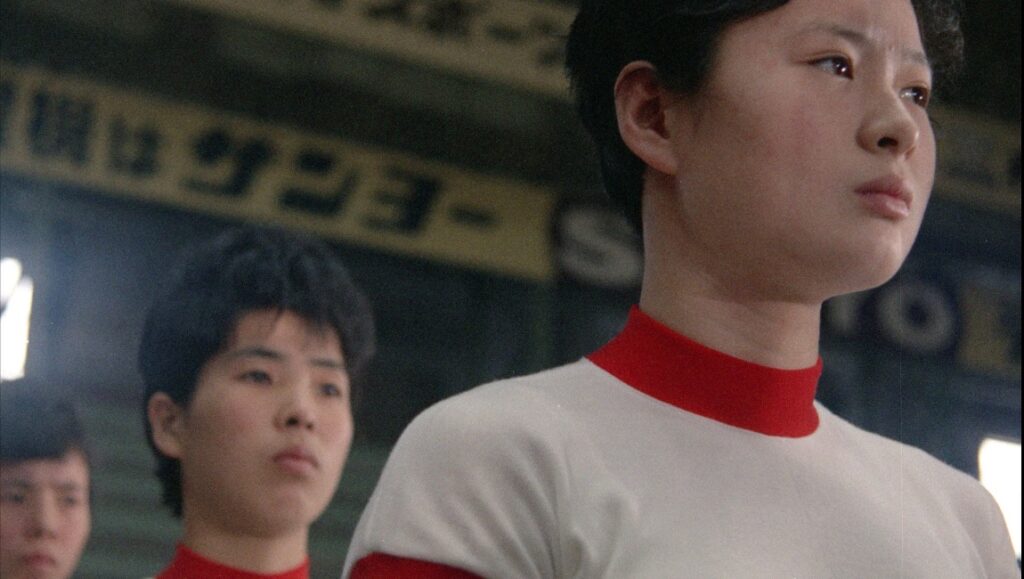The Witches of the Orient once again testifies to Faraut’s facility with crafting surprising, poignant sports docs with plenty of formal character.
It’s exciting to see Julien Faraut’s name attached to a new film, his first since 2018’s John McEnroe: In The Realm of Perfection shook up some of the tired tropes of the sports documentary. His clever construction turned what could have been a by-the-numbers portrait of the bombastic tennis legend into a reflexive meditation on cinematic form, all the while unwrapping layers of its star’s psychology. This follow up, The Witches of the Orient, which premiered at Rotterdam earlier this year, finds the idiosyncratic director training his eye on the sensational Japanese women’s volleyball team of the 1964 Tokyo Olympics. The result is a film that is at once significantly more straightforward than Realm of Perfection, yet still brimming with enough unusual choices to distance itself from more formulaic peers. While Faraut’s bristling at sports doc conventions can make for an uneven and somewhat bumpy ride, his adventurous use of montage and empathetic focus on the women’s lives beyond their former glories serves up a refreshing take on the form nevertheless.
The film opens with a piece of early anime (Danemon Ban: The Monster Exterminator) depicting a mercenary sent to hunt a witch only to be bedazzled by her charms, and follows this sequence with a cut to the surviving members of the team (once labeled “witches” by the press) reuniting for a meal. The camera spins around the dining table, as the women make small talk and begin to reminisce about the glory days, with narration flowing in and as they take turns to tell their individual parts of their story. This intro reveals the fulcrum of the film, how sport exists in a liminal space between the world of myth and the banal of the everyday. Faraut further reinforces this by punctuating critical pieces of competitive footage with clips from Attack No. 1, a volleyball anime inspired by this very team.
But while the plot structure adheres to traditional conventions, trailing the story from the women’s humble beginnings as textile workers — oddly under-explored apart from a Dziga Vertov-style montage intertwining factory work and training — all the way to their legendary appearance at the 1964 Olympic Games, Faraut makes his idiosyncratic presence felt throughout. The aforementioned montages are accompanied by woozy synths or brooding krautrock, giving the sequences an unsettled, hypnotic lilt. In a more standard doc, such musical interludes might work to tighten the pace and propel things forward; here, instead, their melancholy edge slows things down and introduces introspection. This is particularly effective when the turmoil of these sequences is followed by long stretches of the women in present day: playing with their grandkids, humbly cycling through the rain, or staring out of a train window as the world blurs by. The stress that Faraut places on their everyday lives — they’re all now in their 70s — layers their accomplishments on the international stage with a veil of nostalgia, all of this bolstered by the women’s sensitive and candid narration.
John McEnroe: In The Realm of Perfection was a film as barbed as its subject, from its provocative epigraph — “Cinema lies, sport doesn’t.” — to its reflexive probing of the camera’s impact on the sport. The Witches of the Orient, on the other hand, is more subtle in its transgressions, at once approachable in its storytelling, but tonally elusive, easily slipping from the celebratory to the nostalgic to the melancholic. It’s a film that tells a familiar story with an unusual texture, a formal character that creates space for something as striking as a long sequence panning through the devastation of post-war Japan, the black-and-white footage pulled from an old U.S. newsreel playing in silence. This accumulation of small touches gives the film plenty enough personality to overcome its more rote elements, and upholds Faraut’s stature as a director to keep an eye on.


Comments are closed.